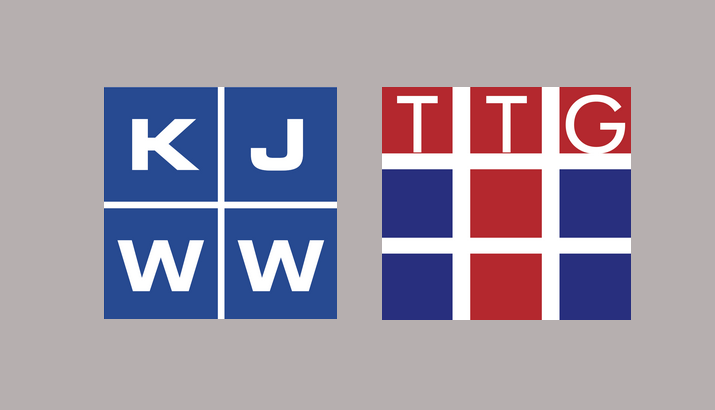Two of the nonresidential building industry’s leading engineering firms have joined forces to leverage their similar sizes and market strategies.
KJWW Engineering, based in Rock Island, Ill., and TTG Engineers, based in Pasadena, Calif., will continue to operate under their own banners, but within a newly created holding company with common management.
Ranked 11th and 14th, respectively, on BD+C’s 2014 Engineering Giants list, the firms’ combined revenues last year would have elevated them to No. 4.
The merger unites two companies with a combined 860 employees working in 25 national and five international locations. “The merger gives TTG and KJWW a larger presence throughout the U.S. and strengthens our collective dominance in the healthcare, higher education, government, entertainment, industrial, and transportation markets,” said Zareh Astrouian, PE, SE, president of TTG. Paul VanDuyne, PE, KJWW’s president, added that the merger “allows us to build on those strengths with greater geographic mobility.”
In an interview with BD+C, VanDuyne—who will be CEO of the holding company, with Astrouian its chairman— said the two firms would spend the next 15 months integrating their operational infrastructure, such as accounting, IT, etc. Over that period, the companies will keep their engineering teams intact, while integrating similar practices. VanDuyne was quick to note that the merger is not a prelude to staff reductions. “Human capital is at such a premium right now, and we would be very happy to go through this process without losing a single person.”
VanDuyne believed this merger would allow both companies to serve national end-user clients more effectively. TTG should gain from KJWW’s strengths in such areas as medical equipment planning and architectural lighting, while KJWW should benefit from TTG’s expertise in the entertainment sector. “We feel this is a great opportunity to take a look at a brand new organization. That’s a little bit extraordinary for two $50 million companies,” he said.
The firms’ executives have been discussing this merger for about a year, said VanDuyne. “It started with a phone call about getting together. We met at [KJWW’s] offices in Chicago, and it went on from there.”
KJWW and TTG announced their merger less than a month after Thornton Tomasetti merged with Weidlinger Associates. While VanDuyne didn’t think these events necessarily presaged more consolidation among engineering companies, he did note that “scale” is becoming more important for firms to be relevant to clients in such areas as BIM and sustainability.
It hasn’t been determined whether the firms would eventually operate out of a single headquarters. That seems unlikely, at least in the near future, especially when Van Duyne said “I don’t think this is the last time you’re going to hear from us about expanding across the country.”
Related Stories
| Dec 29, 2014
Wearable job site management system allows contractors to handle deficiencies with subtle hand and finger gestures [BD+C's 2014 Great Solutions Report]
Technology combines a smartglass visual device with a motion-sensing armband to simplify field management work. The innovation was named a 2014 Great Solution by the editors of Building Design+Construction.
| Dec 29, 2014
From Ag waste to organic brick: Corn stalks reused to make construction materials [BD+C's 2014 Great Solutions Report]
Ecovative Design applies its cradle-to-cradle process to produce 10,000 organic bricks used to build a three-tower structure in Long Island City, N.Y. The demonstration project was named a 2014 Great Solution by the editors of Building Design+Construction.
| Dec 29, 2014
14 great solutions for the commercial construction market
Ideas are cheap. Solutions are what count. The latest installment in BD+C's Great Solutions series presents 14 ways AEC professionals, entrepreneurs, and other clever folk have overcome what seemed to be insoluble problems—from how to make bricks out of agricultural waste, to a new way to keep hospitals running clean during construction.
| Dec 29, 2014
HealthSpot station merges personalized healthcare with videoconferencing [BD+C's 2014 Great Solutions Report]
The HealthSpot station is an 8x5-foot, ADA-compliant mobile kiosk that lets patients access a network of board-certified physicians through interactive videoconferencing and medical devices. It was named a 2014 Great Solution by the editors of Building Design+Construction.
| Dec 28, 2014
Robots, drones, and printed buildings: The promise of automated construction
Building Teams across the globe are employing advanced robotics to simplify what is inherently a complex, messy process—construction.
BIM and Information Technology | Dec 28, 2014
The Big Data revolution: How data-driven design is transforming project planning
There are literally hundreds of applications for deep analytics in planning and design projects, not to mention the many benefits for construction teams, building owners, and facility managers. We profile some early successful applications.
| Dec 28, 2014
AIA course: Enhancing interior comfort while improving overall building efficacy
Providing more comfortable conditions to building occupants has become a top priority in today’s interior designs. This course is worth 1.0 AIA LU/HSW.
| Dec 28, 2014
6 trends steering today's college residence halls
University students want more in a residence hall than just a place to sleep. They want a space that reflects their style of living and learning.
| Dec 28, 2014
The lowdown on LODs: Bringing clarity to BIM
These days, BIM is par for the course across most facets of design. But a lot of the conversation surrounding BIM still lacks clarity due to ambiguous terminology, a lack of clear-cut guiding illustrations, and widely varying implementation, writes GS&P's John Scannell.
| Dec 28, 2014
10 key design interventions for a healthier, happier, and more productive workplace
Numerous studies and mountains of evidence confirm what common sense has long suggested: healthy, happier workers are more productive, more likely to collaborate with colleagues, and more likely to innovate in ways that benefit the bottom line, writes Gensler's Kirsten Ritchie.

















